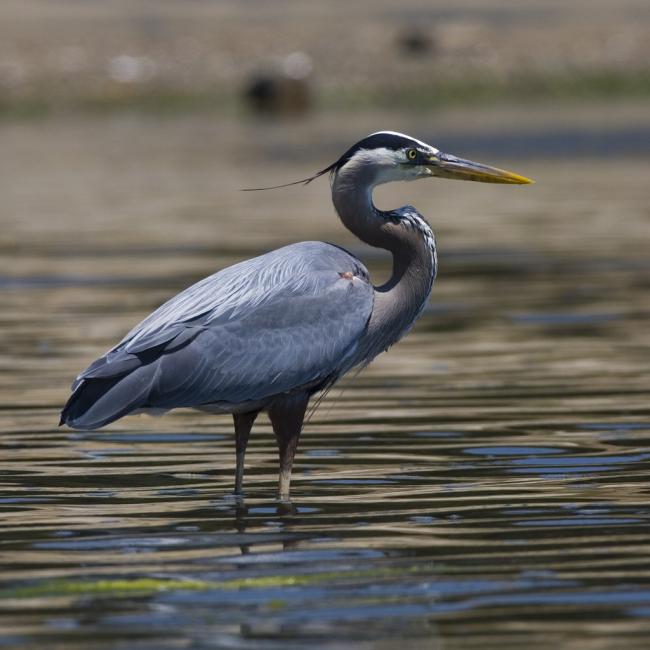Helping herons live in Seattle
Over 80 blue heron nests have been found in Magnolia’s Kiwanis Ravine area this year.
Sun, 09/23/2012
By Christy Wolyniak
Nestled in the lush Kiwanis Ravine, the North American blue herons enjoy a natural habitat mostly undisturbed by humans. The Heron Habitat Helpers, an organization committed to restoring habitats for urban wildlife, hosted an open house at the Discovery Park Visitor Center on Saturday.
The Kiwanis Ravine is the first wildlife sanctuary in Seattle and home to the largest number of blue heron nests. Just this year, 80 nests have been found in the area -- a boom from 35 nests in 2001.
HHH was founded 11 years ago when Heidi Carpine and 25 other individuals got together to figure out how to help preserve the habitat of the blue herons as developers were closing in on the property of the Kiwanis Ravine. To her surprise, the developers near the Ravine were in full support of their efforts to protect the birds.
Chris Anderson, who is a biologist for the Washington Department of Fish & Wildlife, spoke at the event. “Keep in mind, these animals are on a fine line between success and failure,” Anderson said.
The Kiwanis herons nest in maple and alder trees. The HHH has advised construction projects and tree trimming to happen outside of the nesting season, from February to April or June. Females lay three to five eggs, though only 30 percent will make it past the first winter. If the birds do make it, they can expect to live from 15 to 23 years or more if undisturbed.
As blue herons make their nesting grounds in urban landscapes, Heron Helpers make a point to inform the community about how to help preserve the bird’s natural habitat.
“We want to get out the word about who we are and about how to protect [the herons],” HHH Volunteer Coordinator Barbara Selemon said.
Anderson said people can help protect the herons that are living amongst them in a number of ways, namely by taking actions to avoid bringing in predators. Some examples include waste management and cleanliness, keeping compost in protected containers, not feeding pets outside and leaving food for other animals, and not feeding heron predators such as raccoons and eagles.
The HHH promotes citizen-monitoring programs where people can go on heron tours and watch the birds feeding. Raising funds to support their efforts, the organization has received a $16,500 grant from the Department of Neighborhoods that has helped fund awareness programs in the Seattle area.
Though walking through the colony in the Kiwanis Ravine is discouraged, there are other places to view herons. The University of Washington campus has seen its share of blue herons, and heron viewing can also take place at Mathews Beach Park and the West Marginal Way Greenbelt.
Even Ballard is home to herons. They hunt for fish at the Ballard Locks and live in the trees along the path west of the Ballard Locks and east of the railroad bridge.
For more information on how to help preserve urban wildlife, or to view live video steams of the heron habitat, visit http://wdfw.wa.gov/ or www.heronhelpers.org.


